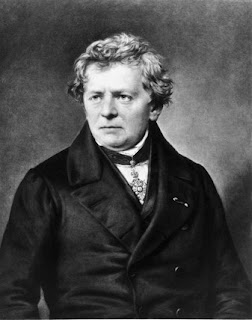 |
| GEORGE SIMON OHM |
In the year 1827, a German Physicist, George Simon Ohm, published a pamphlet entitled "Die galvanische kette mathematisch bearbeitet" meaning "The Galvanic circuit investigated mathematically".
This pamphlet contained the results of one of the first efforts to measure current and voltage and to describe and relate them mathematically. One result was a statement of the fundamental relationship we now call 'Ohm's law'. Ohm's law is the most fundamental law in Electrical engineering. It states that
" The potential difference between the two ends of a conductor is directly proportional to the current flowing through it, provided its temperature and other physical parameters remain unchanged". That is,
\[V\alpha
I\] or \[V=RI\]
The constant of proportionality R is called the resistance of the conductor. Its unit is ohm($\Omega
$).
Another way of stating ohm's law is $I\alpha
V$ or $I=GV$.
The constant of proportionality G is called the conductance of the conductor. It is the reciprocal of resistance and its SI unit is Siemens(S).
OHM'S LAW IN GRAPHICAL FORM -
 |
| OHM'S LAW IN GRAPHICAL FORM |
A conductor showing straight line V-I characteristics is said to have a linear resistance.
SHORT CIRCUIT AND OPEN CIRCUIT -
Then V=0, and R=0 with I$\ne
$0 . It represents a short circuit and is represented by the circuit as shown in the figure given below.
Ohm's law alone is not enough to analyze all the complex circuits in electrical. There are some more laws such as Kirchhoff's law which help in better analyzing the circuits. These laws will be discussed in the further posts.




